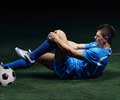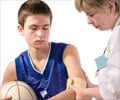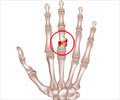The USA has seen a dramatic rise in pediatric sports injuries in recent years. However, awareness, education, warning signs and early treatment can make a significant difference and help keep these athletes in the game, say experts.
At the 2010 Annual Meeting of the American Academy of Orthopaedic Surgeons (AAOS) Wednesday, two separate studies focused on the issue.Thomas M. DeBerardino, MD, an orthopaedic surgeon specializing in sports medicine for the University of Connecticut Huskies and Associate Professor of Orthopaedics at the University of Connecticut Health Center, moderated an instructional course at AAOS annual meeting, titled "Athletic Injuries in the Adolescent Athlete." According to Dr. DeBerardino, adolescent sport-related injuries are on the rise, so much so that they have become a "silent epidemic."
"More adolescents are participating in year-round sports without seasonal breaks, or they are playing on multiple teams simultaneously," he says. "This increased exposure means there will continue to be growing numbers of significant musculoskeletal injuries, both traumatic and chronic overuse."
Awareness and prevention can help, and Dr. DeBerardino says it's important to recognize that adolescents are just as susceptible to overuse and traumatic joint/extremity injuries as adults. At the same time, they are not "miniature adults" and because their bodies are still growing, there are special concerns in relation to orthopaedic injuries.
For example:
If metal hardware needs to be surgically implanted in an area that is still growing, it can stunt a child's growth.
Advertisement
"Everyone wants to get to the top," says Dr. DeBerardino. "But we have to look at this and say, are we pushing kids too hard? Even athletes at the college and pro levels have mandated downtimes. We cannot wait for kids to reach the college level to modify their training, because by that time it could be too late."
Advertisement
Despite this increase in OCD injuries, excellent outcomes are possible after arthroscopic treatment, says the study, but early detection is key.
"While patients requiring surgery for OCD injuries can benefit from arthroscopic surgery, understanding the warning signs can help prevent athletes from presenting with more extensive lesions, said Dr. Ganley at The Children's Hospital of Philadelphia Medicine, who led the study.
Early warning signs include:
persistent pain during activity;
painful, swelling of the elbow;
locking or 'catching' of the elbow joint; or
loss of motion.
"Early detection can allow for the option of non-operative treatments, such as activity modification followed by physical therapy," says Dr. Ganley. "This can promote complete healing and rehabilitation allowing the young gymnast to fully return to his or her sport."
Source-Medindia
GPL











